Bunches of grapes, oil on canvas laid down on board, 95.5 x 72 cm, framed Provenance: Private European collection The present painting represents two vine branches richly laden with grapes; it is an impressive example of first-generation Roman still-life painting. Stylistically this work appears to have been executed during the second decade of the seventeenth century, and no later than 1620, and therefore this painting exemplifies the development of still-life painting in Rome at the beginning of the Seicento. The present composition can be compared to works by the so called Master of the Acquavella Still-life, named after the still-life painting formerly with the Acquavella Gallery, New York (F. Zeri/G. Porzio, La natura morta in Italia, Milan 1989, vol. II, p. 713, fig. 845). This artist was active at least into the third decade of the seventeenth century and was greatly influenced by Caravaggio. A group of works have been stylistically associated with this Master and various names have been advanced including Angelo Caroselli Giovanni Battista Crescenzi, Pietro Paolini and most recently the name advanced by scholars is Bartolomeo Cavarozzi (1590-1625). Indeed, naturalistic passages by the Master of Acquavella appear in the figurative compositions of Bartolomeo Cavarozzi as for example in the Lamentation of Aminta in a private collection, Turin (see D. Sanguineti, Genova 1617: incontro con Bartolomeo Cavarozzi in: Bartolomeo Cavarozzi a Genova, exhibition catalogue, ed. by G. Zanelli, Genoa 2017, p. 33, fig. 2). The manner in which the painted grapes fill the picture plane entirely is comparable to other paintings by the Master of Acquavella: the two large canvases representing Branches of grape vine and fig branches and Branches of grape vine and Quince in a private collection (A. Cottino, La natura morta caravaggesca a Roma, in: La natura morta in Italia, ed. by F. Zeri/F. Porzio, Milan 1989, vol. 2, p. 715, figs. 849, 850) and likewise, the pair representing Black grapes and White grapes formerly in a private collection, Turin (see L. Laureati, Dal Maestro della natura morta di Acquavella a Michelangelo Cerquozzi Un’ ipotesi di lavoro, in: La natura morta di Federico Zeri, ed. by A. Bacchi/F. Mambelli/E. Sambo, Bologna 2015, figs. 2-3). Caravaggio was certainly the primary stimulus as concerns the development of still-life painting in Rome at the close of the sixteenth and through the seventeenth century: his example encouraged artists to view inanimate objects in an new way and his compostion of Basket of fruit of 1599 now in the Pinacoteca Ambrosiana, Milan was a modello. Simultaneously, among the group of artists that gravitated around Caravaggio at the turn of the century, the Master of Acquavella was of significance in promoting a dynamic creative ambit.
Bunches of grapes, oil on canvas laid down on board, 95.5 x 72 cm, framed Provenance: Private European collection The present painting represents two vine branches richly laden with grapes; it is an impressive example of first-generation Roman still-life painting. Stylistically this work appears to have been executed during the second decade of the seventeenth century, and no later than 1620, and therefore this painting exemplifies the development of still-life painting in Rome at the beginning of the Seicento. The present composition can be compared to works by the so called Master of the Acquavella Still-life, named after the still-life painting formerly with the Acquavella Gallery, New York (F. Zeri/G. Porzio, La natura morta in Italia, Milan 1989, vol. II, p. 713, fig. 845). This artist was active at least into the third decade of the seventeenth century and was greatly influenced by Caravaggio. A group of works have been stylistically associated with this Master and various names have been advanced including Angelo Caroselli Giovanni Battista Crescenzi, Pietro Paolini and most recently the name advanced by scholars is Bartolomeo Cavarozzi (1590-1625). Indeed, naturalistic passages by the Master of Acquavella appear in the figurative compositions of Bartolomeo Cavarozzi as for example in the Lamentation of Aminta in a private collection, Turin (see D. Sanguineti, Genova 1617: incontro con Bartolomeo Cavarozzi in: Bartolomeo Cavarozzi a Genova, exhibition catalogue, ed. by G. Zanelli, Genoa 2017, p. 33, fig. 2). The manner in which the painted grapes fill the picture plane entirely is comparable to other paintings by the Master of Acquavella: the two large canvases representing Branches of grape vine and fig branches and Branches of grape vine and Quince in a private collection (A. Cottino, La natura morta caravaggesca a Roma, in: La natura morta in Italia, ed. by F. Zeri/F. Porzio, Milan 1989, vol. 2, p. 715, figs. 849, 850) and likewise, the pair representing Black grapes and White grapes formerly in a private collection, Turin (see L. Laureati, Dal Maestro della natura morta di Acquavella a Michelangelo Cerquozzi Un’ ipotesi di lavoro, in: La natura morta di Federico Zeri, ed. by A. Bacchi/F. Mambelli/E. Sambo, Bologna 2015, figs. 2-3). Caravaggio was certainly the primary stimulus as concerns the development of still-life painting in Rome at the close of the sixteenth and through the seventeenth century: his example encouraged artists to view inanimate objects in an new way and his compostion of Basket of fruit of 1599 now in the Pinacoteca Ambrosiana, Milan was a modello. Simultaneously, among the group of artists that gravitated around Caravaggio at the turn of the century, the Master of Acquavella was of significance in promoting a dynamic creative ambit.


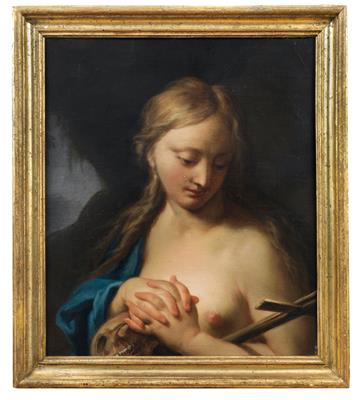
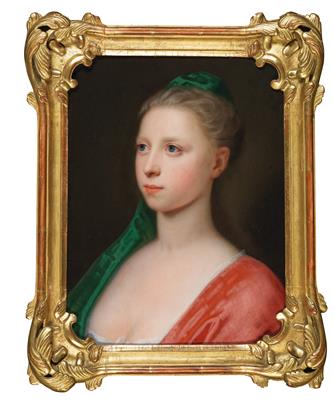



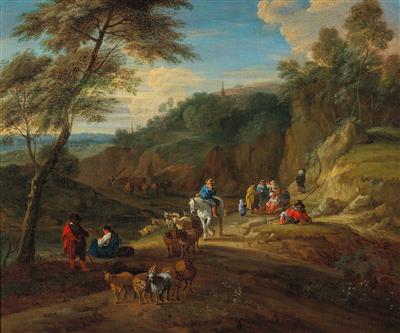

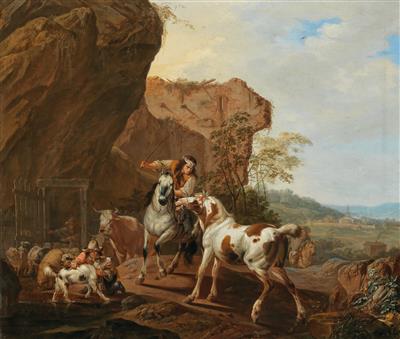
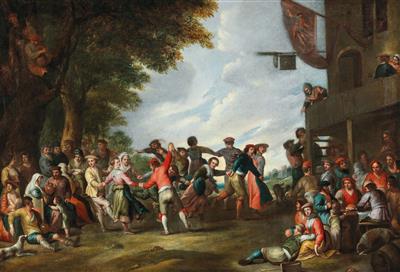

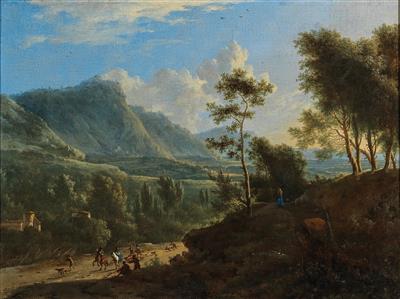
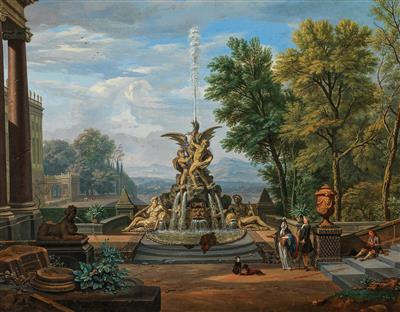

Try LotSearch and its premium features for 7 days - without any costs!
Be notified automatically about new items in upcoming auctions.
Create an alert